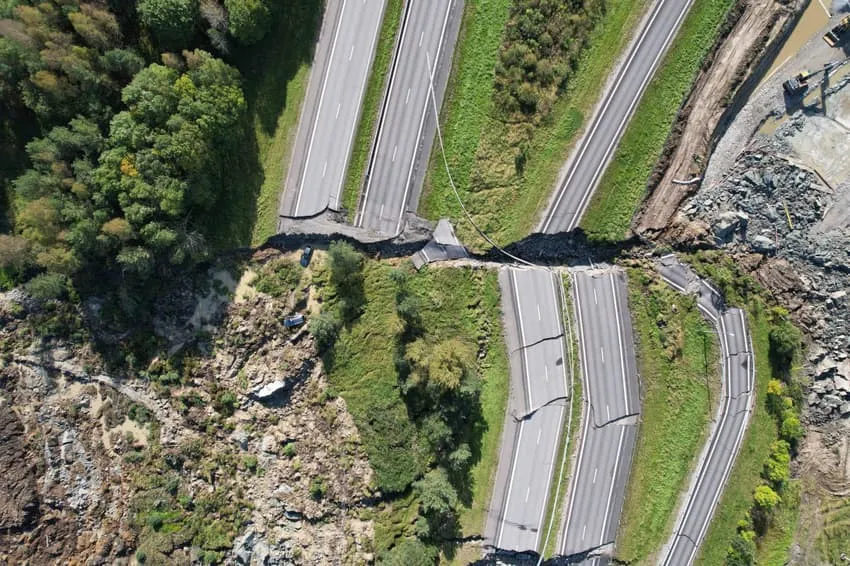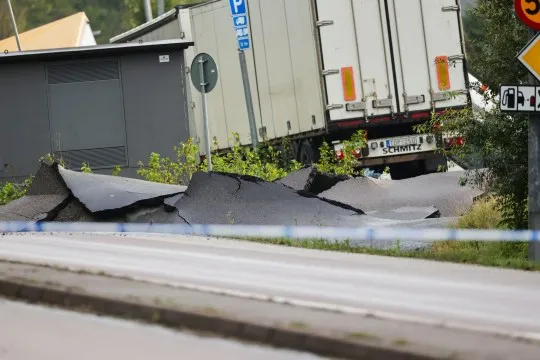A devastating landslide in western Sweden has caused a massive sinkhole to open up on a major highway, injuring three people and leaving several cars and a bus damaged. The incident occurred on the E6 highway, which runs from southern Sweden to Norway, not far from Gothenburg, the country’s second-largest city. According to police, at least four cars and a bus skidded off the road and crashed, resulting in three people being admitted to hospital.
The sinkhole, which measures a staggering 500 meters (1,640 feet) wide, has also damaged several buildings and facilities in the area. Emergency officials have been working to rescue any potential survivors, with specially trained dogs and staff searching the debris to ensure there are no people trapped.
The cause of the landslide is still unknown, but local media reports suggest that recent construction activities involving blasting and excavation work may have contributed to the incident. Additionally, a large amount of rain has fallen in the past few days, which may also have played a role.
The police have launched a preliminary investigation into the incident, and the road remains closed as the situation is assessed and surveyed. The extent of the damage is still being evaluated, but the impact on the local community will be significant.

Massive Sinkhole and Landslide on Sweden’s E6 Highway
The incident has raised concerns about the structural integrity of the highway and surrounding infrastructure, particularly in light of the recent construction activities in the area. The investigation must be thorough and efficient to prevent similar incidents in the future.
In the meantime, emergency services are working around the clock to respond to the situation, and residents are being kept informed about the progress of the rescue efforts. The incident serves as a stark reminder of the importance of ensuring the safety and well-being of the public, particularly in areas prone to natural disasters or infrastructure failures.
As the investigation continues, authorities are working to identify the root cause of the landslide and to develop strategies to mitigate the impact on the community. The rehabilitation of the affected area will be a complex and challenging process, but it must be carried out efficiently and effectively to avoid further disruptions to the region.
Ultimately, the incident highlights the need for effective emergency planning and preparedness, as well as the importance of regular maintenance and inspections of critical infrastructure to prevent similar incidents in the future.











































